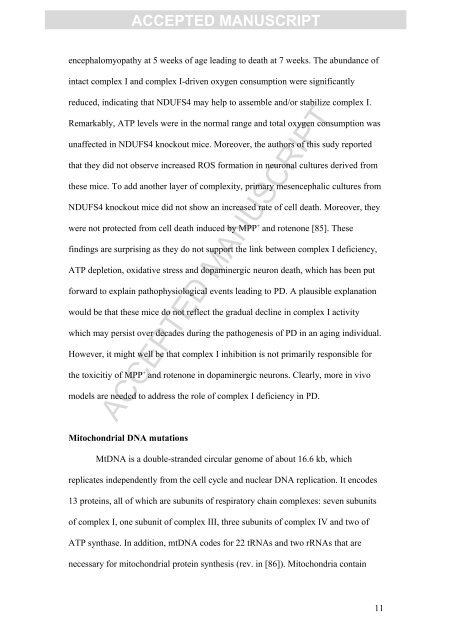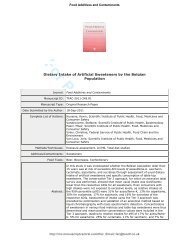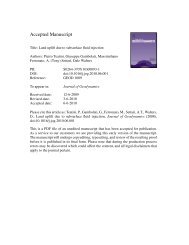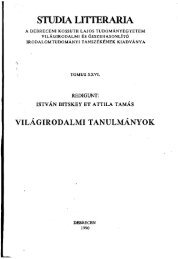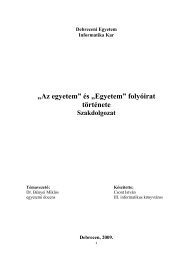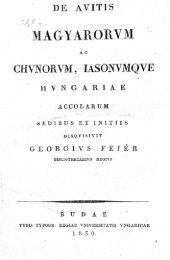accepted manuscript
accepted manuscript
accepted manuscript
Create successful ePaper yourself
Turn your PDF publications into a flip-book with our unique Google optimized e-Paper software.
ACCEPTED MANUSCRIPT<br />
encephalomyopathy at 5 weeks of age leading to death at 7 weeks. The abundance of<br />
intact complex I and complex I-driven oxygen consumption were significantly<br />
reduced, indicating that NDUFS4 may help to assemble and/or stabilize complex I.<br />
Remarkably, ATP levels were in the normal range and total oxygen consumption was<br />
unaffected in NDUFS4 knockout mice. Moreover, the authors of this sudy reported<br />
that they did not observe increased ROS formation in neuronal cultures derived from<br />
these mice. To add another layer of complexity, primary mesencephalic cultures from<br />
NDUFS4 knockout mice did not show an increased rate of cell death. Moreover, they<br />
were not protected from cell death induced by MPP + and rotenone [85]. These<br />
findings are surprising as they do not support the link between complex I deficiency,<br />
ATP depletion, oxidative stress and dopaminergic neuron death, which has been put<br />
forward to explain pathophysiological events leading to PD. A plausible explanation<br />
would be that these mice do not reflect the gradual decline in complex I activity<br />
which may persist over decades during the pathogenesis of PD in an aging individual.<br />
However, it might well be that complex I inhibition is not primarily responsible for<br />
the toxicitiy of MPP + and rotenone in dopaminergic neurons. Clearly, more in vivo<br />
models are needed to address the role of complex I deficiency in PD.<br />
ACCEPTED MANUSCRIPT<br />
Mitochondrial DNA mutations<br />
MtDNA is a double-stranded circular genome of about 16.6 kb, which<br />
replicates independently from the cell cycle and nuclear DNA replication. It encodes<br />
13 proteins, all of which are subunits of respiratory chain complexes: seven subunits<br />
of complex I, one subunit of complex III, three subunits of complex IV and two of<br />
ATP synthase. In addition, mtDNA codes for 22 tRNAs and two rRNAs that are<br />
necessary for mitochondrial protein synthesis (rev. in [86]). Mitochondria contain<br />
11


